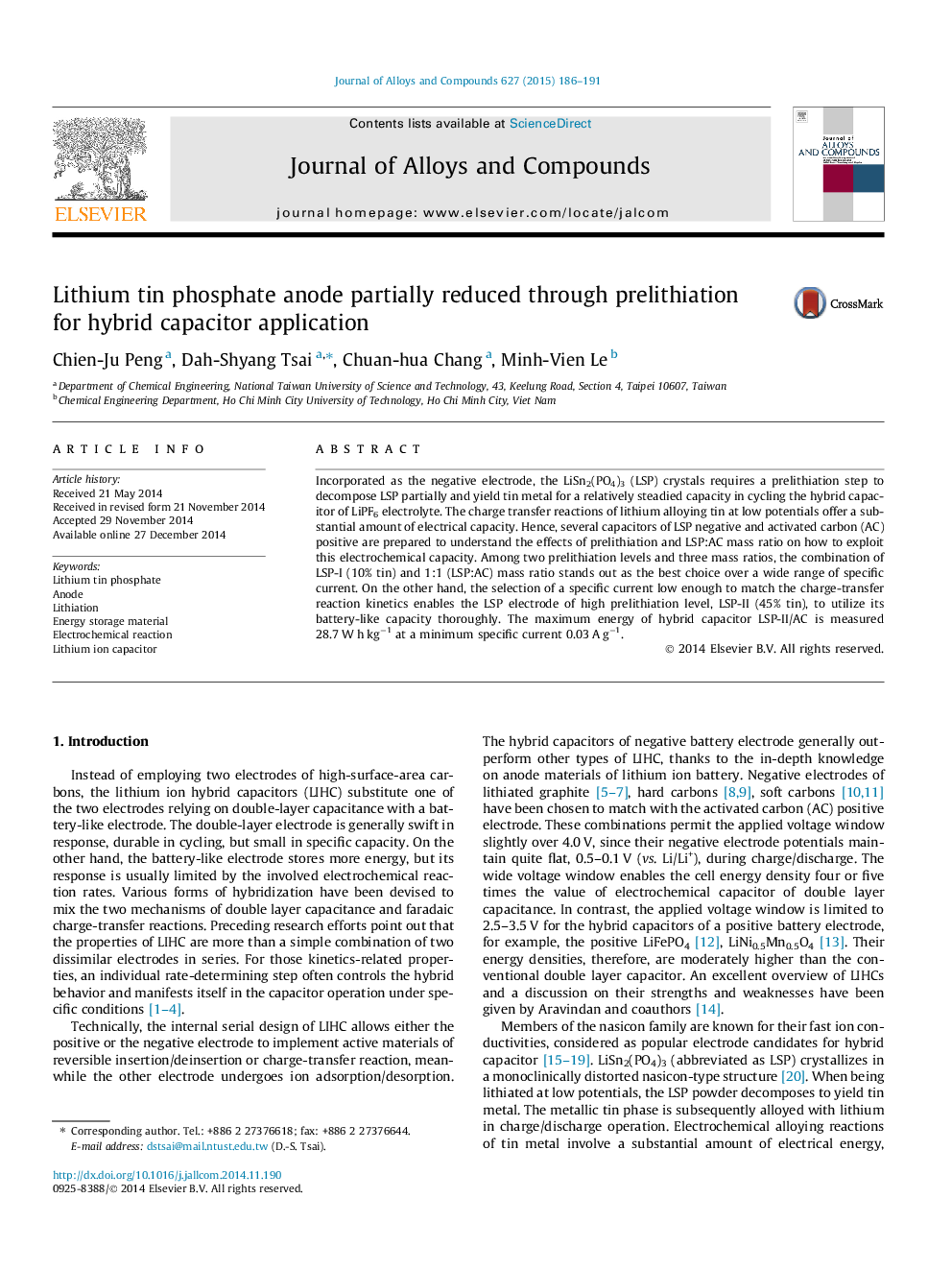| Article ID | Journal | Published Year | Pages | File Type |
|---|---|---|---|---|
| 1609996 | Journal of Alloys and Compounds | 2015 | 6 Pages |
•LiSn2(PO4)3 LSP is prelithiated to yield tin and made steady its electrode capacity.•Several hybrid capacitors are made with negative LSP and positive activated carbon AC.•The effects of LSP prelithiation level and LSP:AC mass ratio are studied.•The plus of metallic tin on capacity is realized only at low current densities.•The LSP-I:AC ratio of 1:1 in mass is superior under most operation conditions.
Incorporated as the negative electrode, the LiSn2(PO4)3 (LSP) crystals requires a prelithiation step to decompose LSP partially and yield tin metal for a relatively steadied capacity in cycling the hybrid capacitor of LiPF6 electrolyte. The charge transfer reactions of lithium alloying tin at low potentials offer a substantial amount of electrical capacity. Hence, several capacitors of LSP negative and activated carbon (AC) positive are prepared to understand the effects of prelithiation and LSP:AC mass ratio on how to exploit this electrochemical capacity. Among two prelithiation levels and three mass ratios, the combination of LSP-I (10% tin) and 1:1 (LSP:AC) mass ratio stands out as the best choice over a wide range of specific current. On the other hand, the selection of a specific current low enough to match the charge-transfer reaction kinetics enables the LSP electrode of high prelithiation level, LSP-II (45% tin), to utilize its battery-like capacity thoroughly. The maximum energy of hybrid capacitor LSP-II/AC is measured 28.7 W h kg−1 at a minimum specific current 0.03 A g−1.
